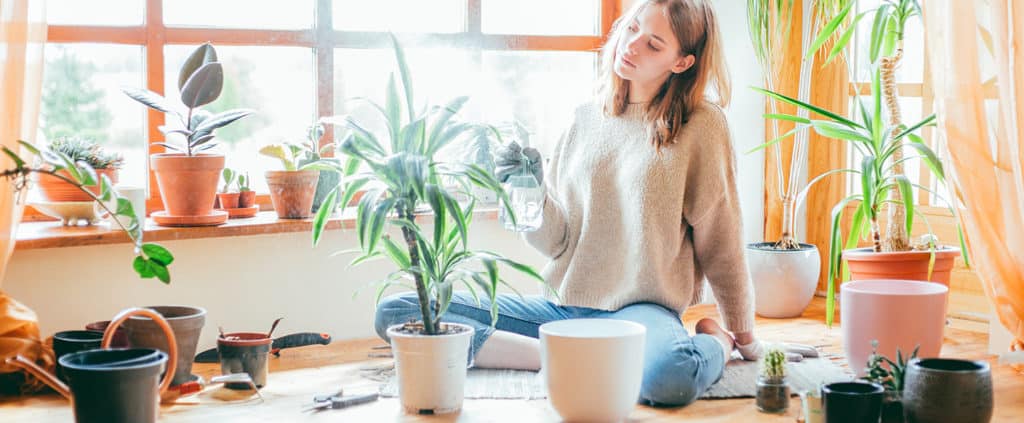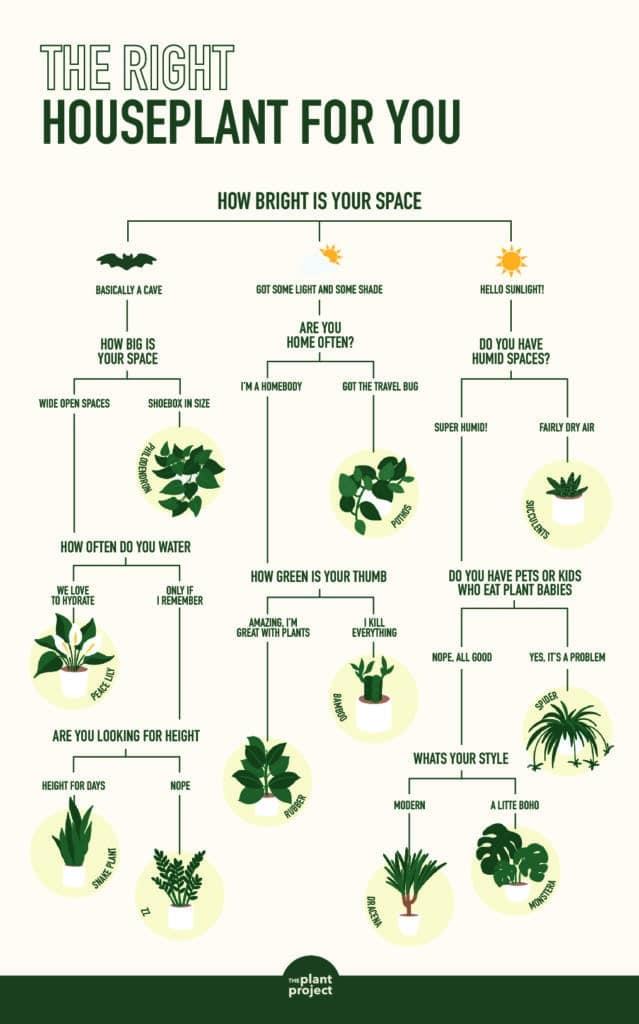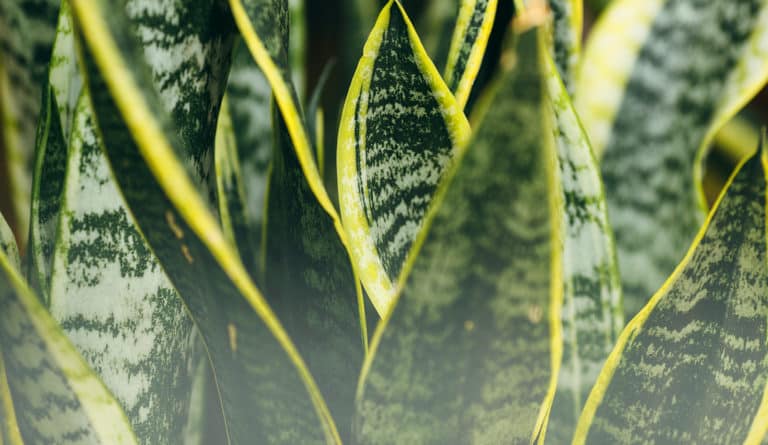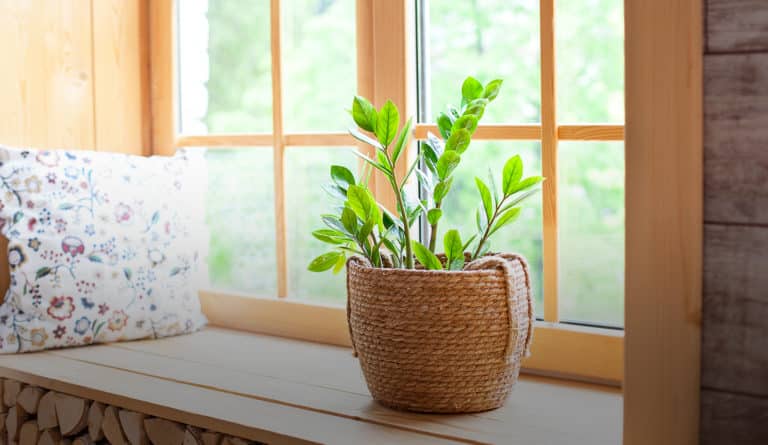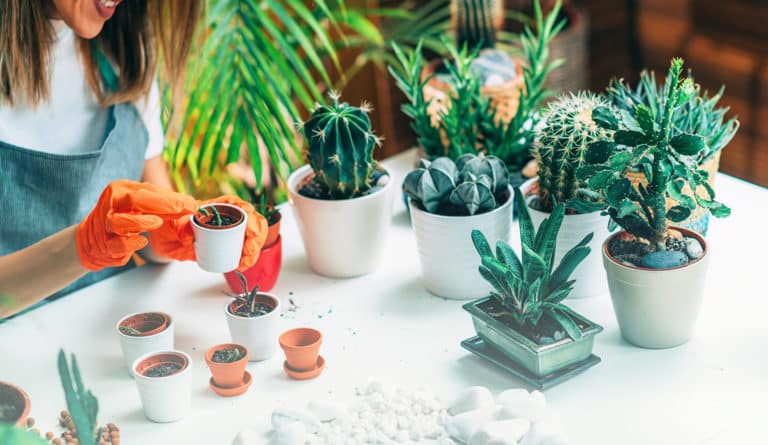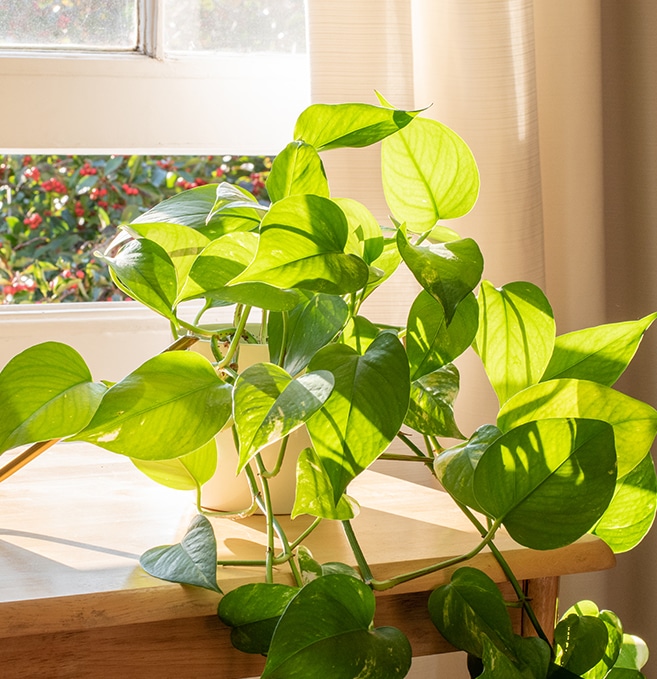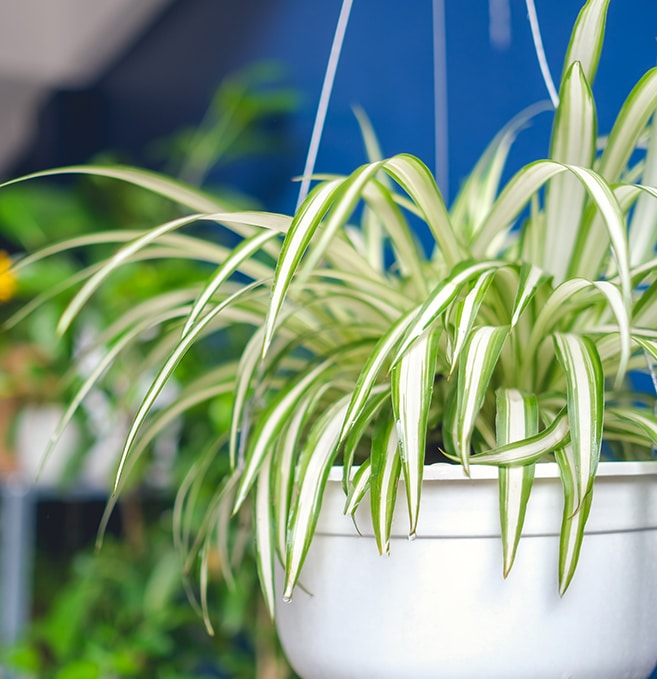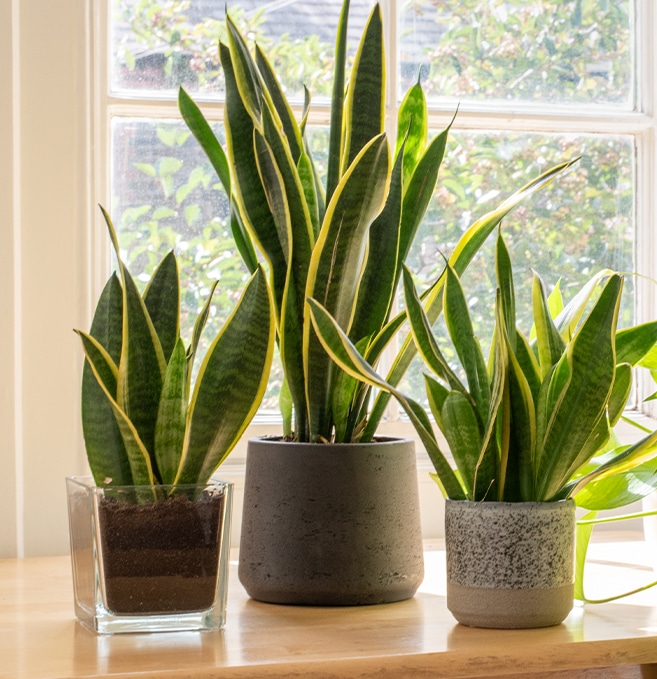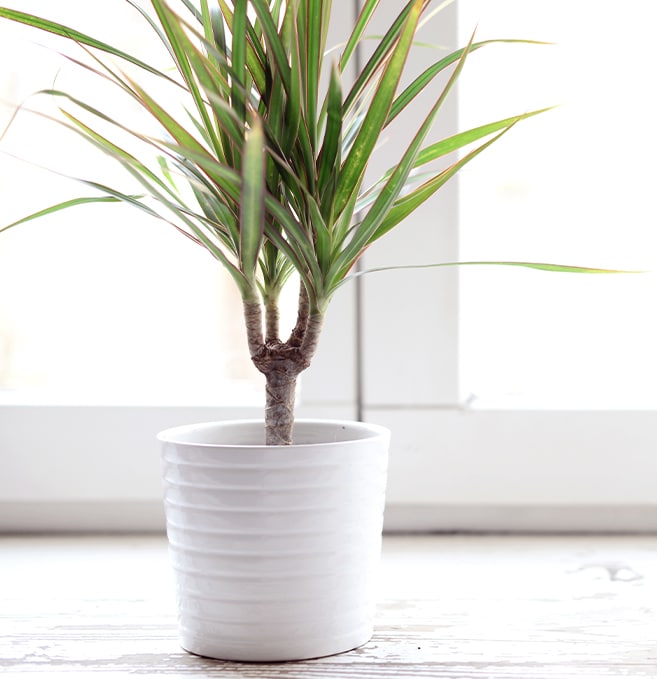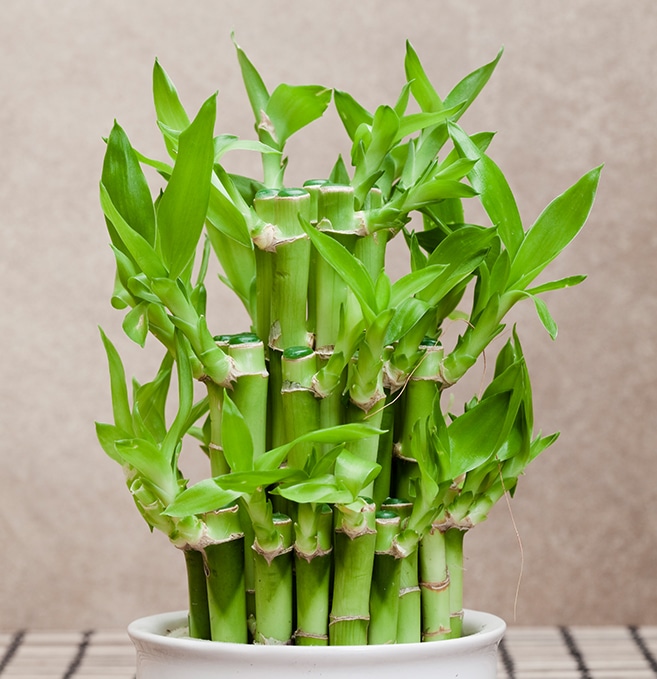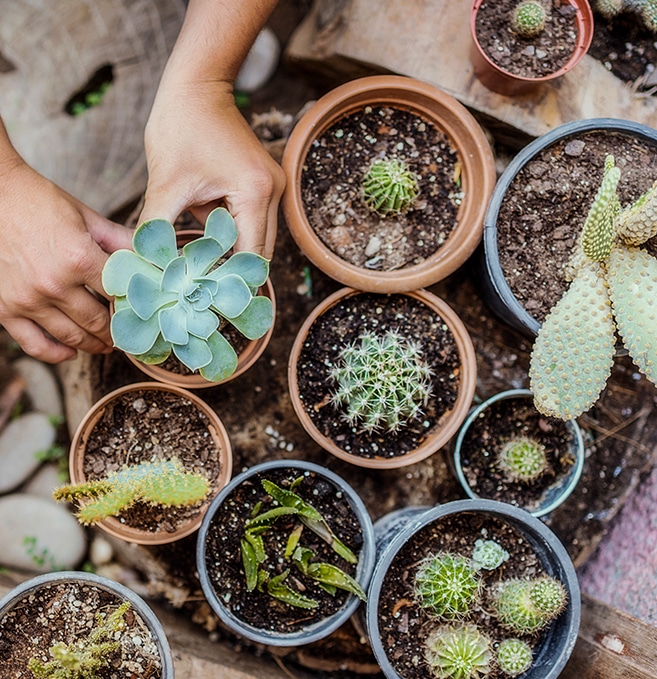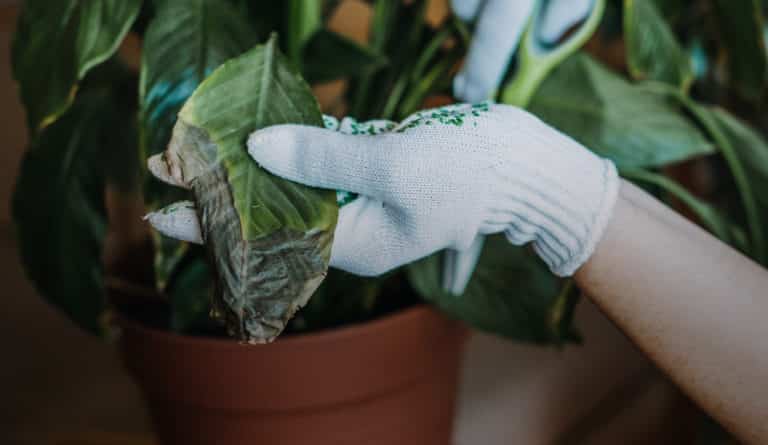Just as we require fresh food for optimal health (but you already knew that, since you’re here to grow your own fresh herbs!) plants require quality soil.Call us biased but the best results come from using Miracle-Gro® Potting Mix, designed for proper nutrient absorption and drainage.
Say goodbye to dried herbs and swap them for their fresh counterparts. More flavourful and healthy, you can even enjoy fresh herbs in winter by growing them indoors. We show you how.
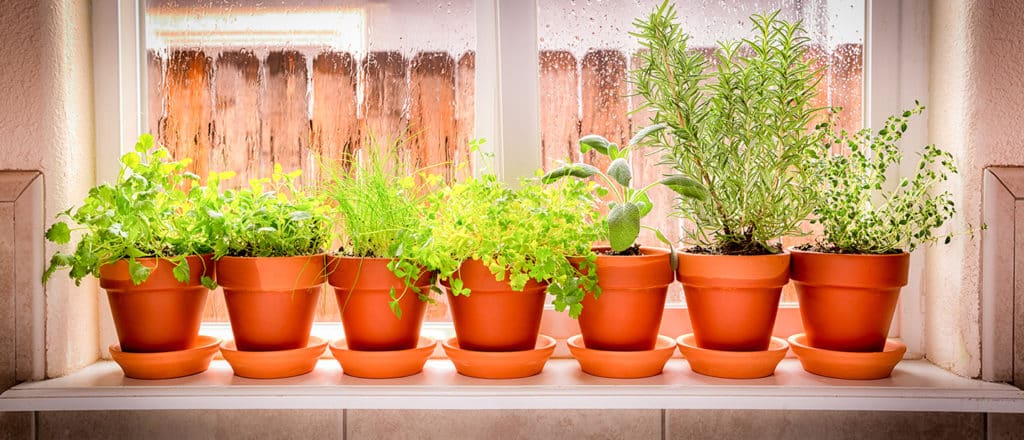
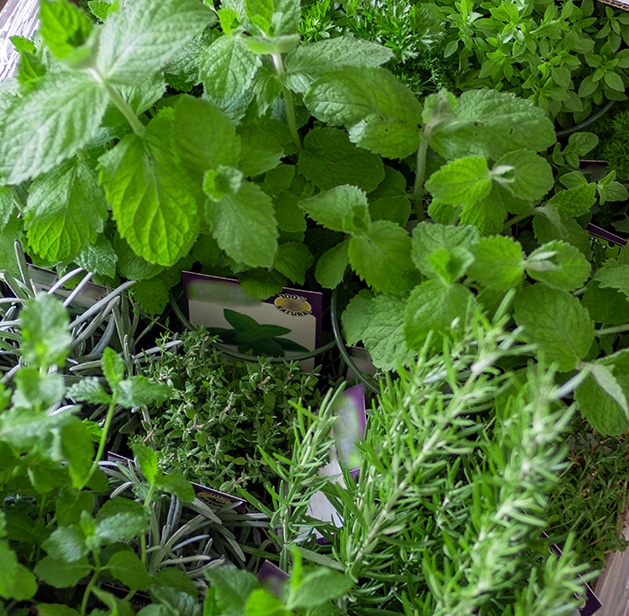
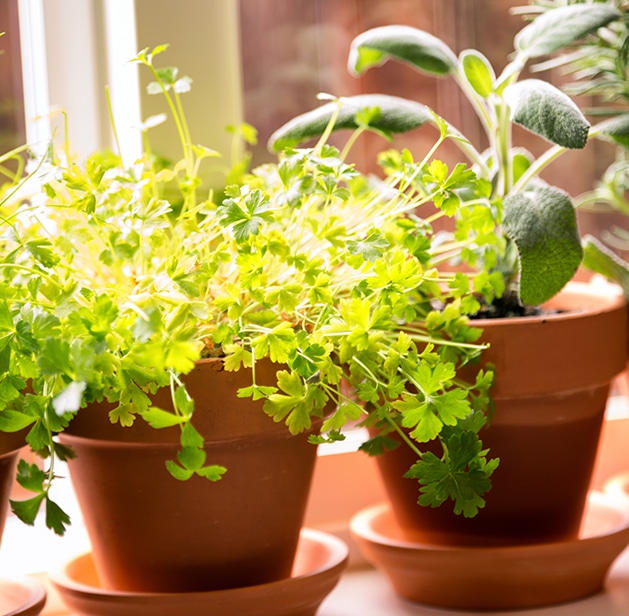
sunny side up
Put it this way, the more sunshine your herb babies get, the more they’ll grow up healthy and abundant. Choose a south-facing window to place your indoor herb garden, avoiding a north-facing windowsill, although east- or west-facing windows are alright, too.
seedy side of the sill
Just as sunlight makes a world of difference, so do the seeds you choose. Small containers work best with denser, smaller seeds. Using a seed starting mix like Miracle-Gro® Seed Starting Potting Mix, sprinkle your herb seeds over the soil and cover not too tightly, or plant your herb seeds an inch or so deep.
talkin’ ‘bout my germination
After you plant the seeds, cover the container with a loose-fitting item like a plastic bag or dome-shaped vessel. Place them in a warm damp spot away from direct sunlight which will allow the seeds to germinate. Once they do, you can remove them and place them in a sunnier spot.
TLC for transplanted herb plants
Your herb babies can undergo shock from dramatic light changes, so adjust them slowly. This means it’s best not to take them directly from a sunny area to a dim one. Allow them to acclimatize by gradually exposing them to lower light conditions. For example, start them in a spot that receives indirect sunlight for two weeks, then to a shadier area for another week or two, until finally moving them to their new indoor home.
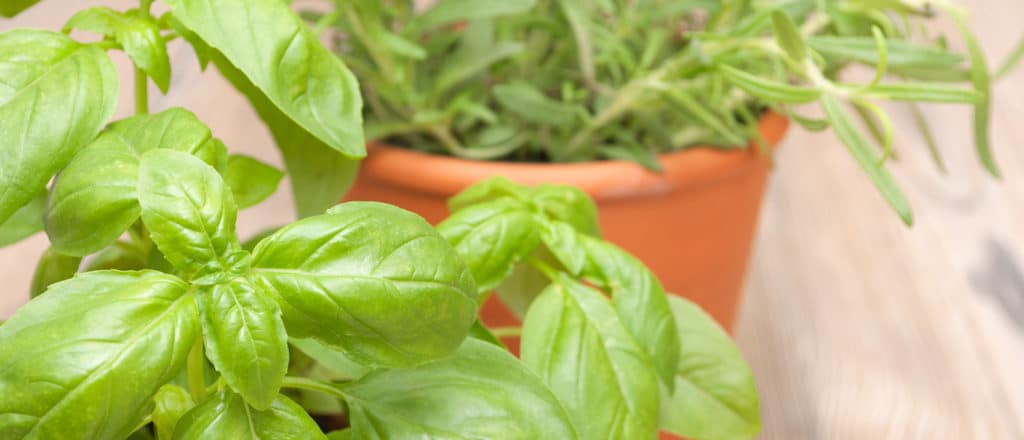
water, but not too much
Your potting mix should dry a bit before the next watering. The best way to check is simply sticking your index finger into the soil and if it’s dry, gently water. Liberal waterings can be a recipe for disaster so avoid over-watering your herbs. A good method is to see water coming out of the bottom of the container but not flooding. Check out the Miracle-Gro®’s line of herb feeding products for a healthy herb harvest.
keeping herbs happy
Like most plants, regular pruning of your herbs enables them to stay compact and grow new leaves and shoots. Herbs are easy to prune since you are likely gently pulling them to add to your cooking or salads. Pruning can even extend your herbs’ growth periods. Flowers might look pretty but they affect flavour and tenderness of the herbs, so be sure to prune them below the bud immediately.
#easypeasy
If you haven’t got on board with the air garden trend, it’s time for you to turn a new leaf. Easy to care for and uniquely beautiful, air plants are a way to brighten your home with green, no soil required.
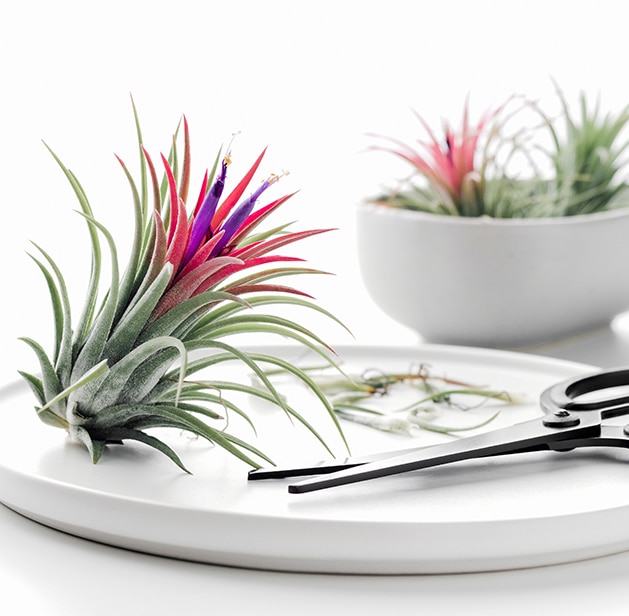
about air plants
Air plants usually grow on other plants, creating intriguing patterns and visual interest. They look wonderful on their own or grouped together! We love seeing them displayed in things like terrariums, wall planters, and driftwood.
flowering air plants?
Their rosette style of growth, meaning new growth stems from the middle of the plant, make these plants fascinating to watch grow and even flower.
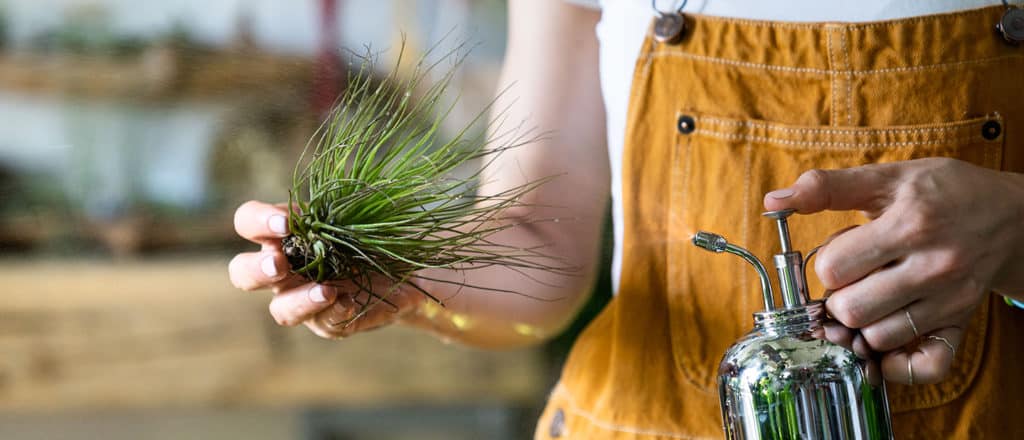
caring for your air plants
As easy as air gardens are to care for, your air plants require the right amount of light and room temperature. Bright, indirect sunlight is best. Since they originate from warmer clients, your air plant babies like a cozy home, so keep the thermostat at least 8 ℃ (46℉) so they don’t get cold. Unlike other houseplants, air plants do not have roots. This means you should soak them at least one a week in a jar for about 30 minutes, then turn upside down gently to drain.
all set!
They can be placed in terrariums or attached to anything from magnets to driftwood for creating your own interesting displays—just use a bit of hot glue or translucent fishing line to create a floating look!
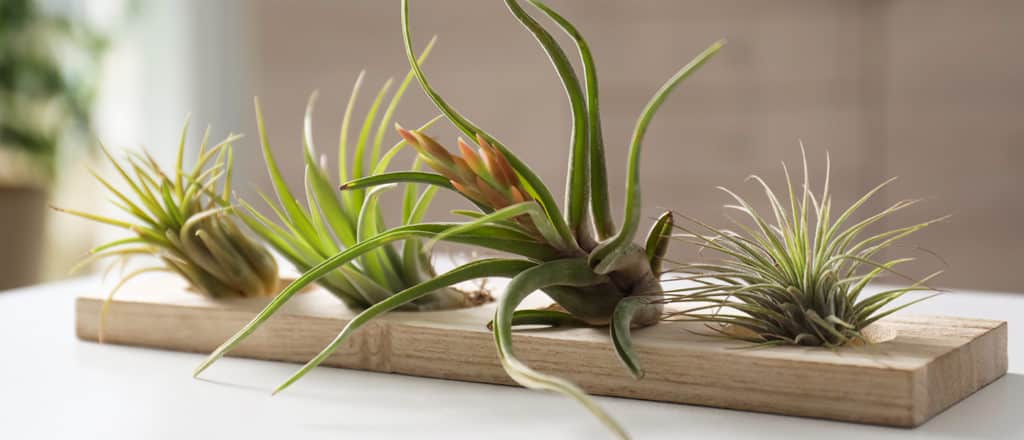
#easypeasy
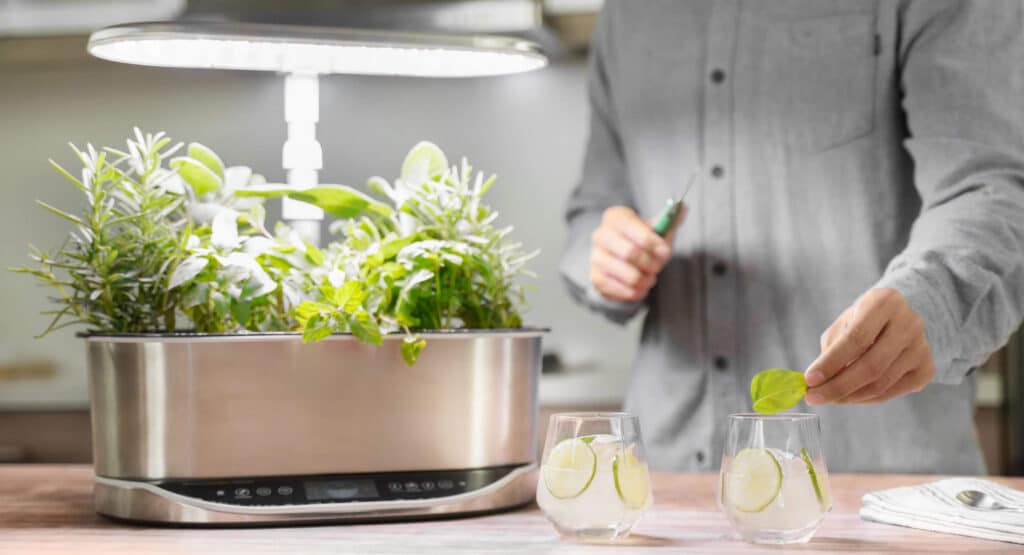
With food prices on the rise, many people are growing their own produce. There’s no need to wait until next spring to start a garden outdoors, you can grow more of what you love – year round.
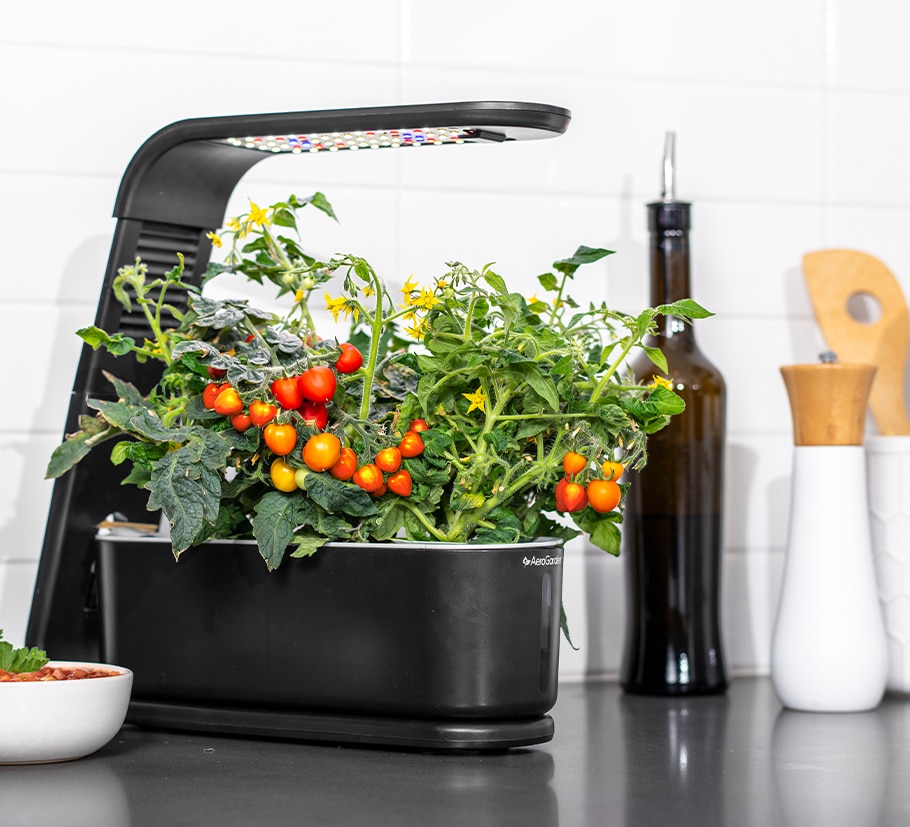
The Aerogarden makes the perfect gift for the plant lover in your life. Grow anywhere with style and convenience.
grow anything
Seed pod kits come in a variety of vegetables and gourmet herbs that include basil, thyme, dill, parsley, chives, mint, cherry tomatoes, and lettuce. A Grow Anything seed pod kit allows you to start your favourite plants before potting them or planting in ground in the spring and summer.
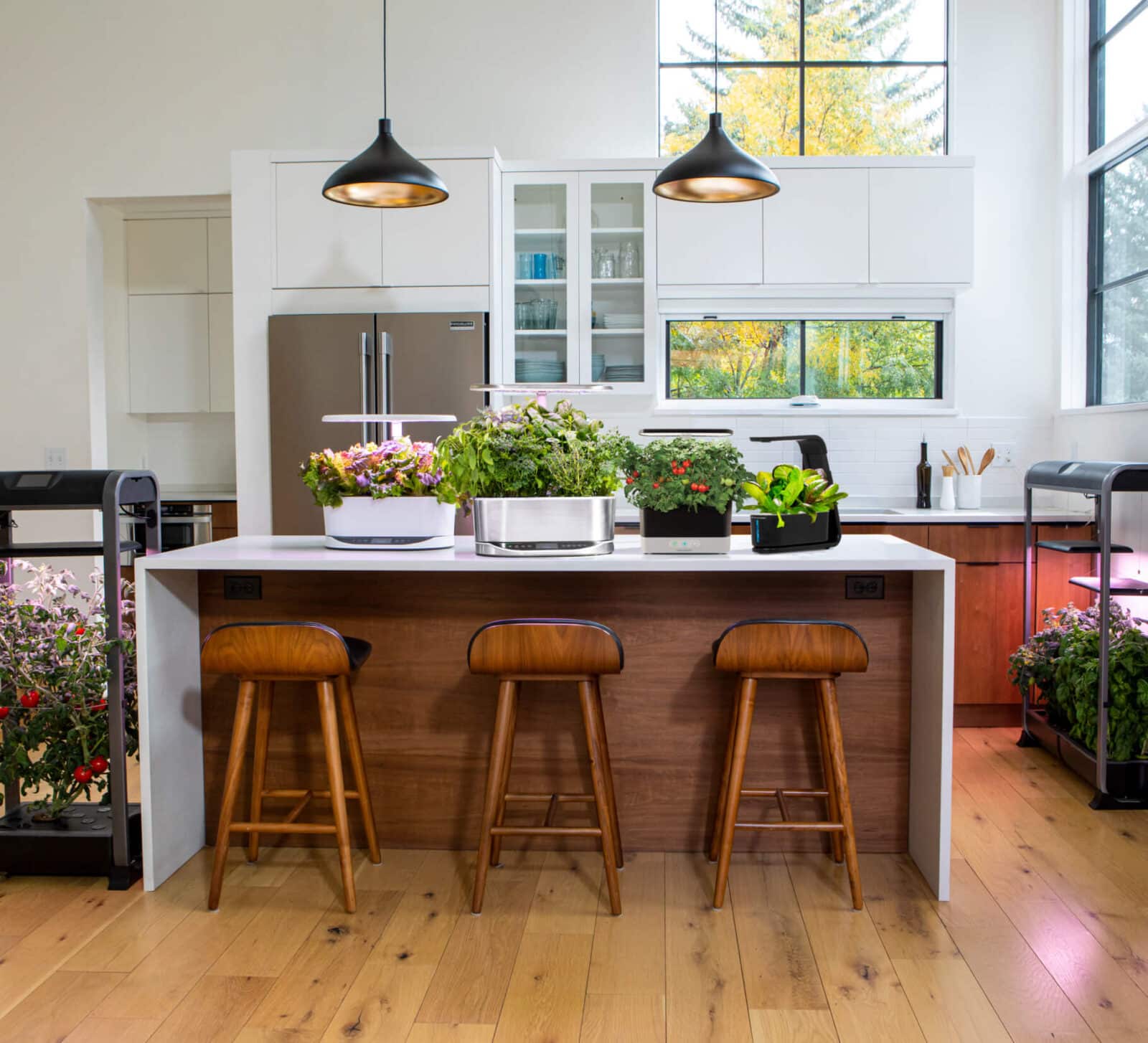
the AeroGarden family
Countertop Aerogardens range from 2 to 9 pods and offer different growing heights as well as space saving options. WiFi and non-WiFi Aerogarden versions are available.
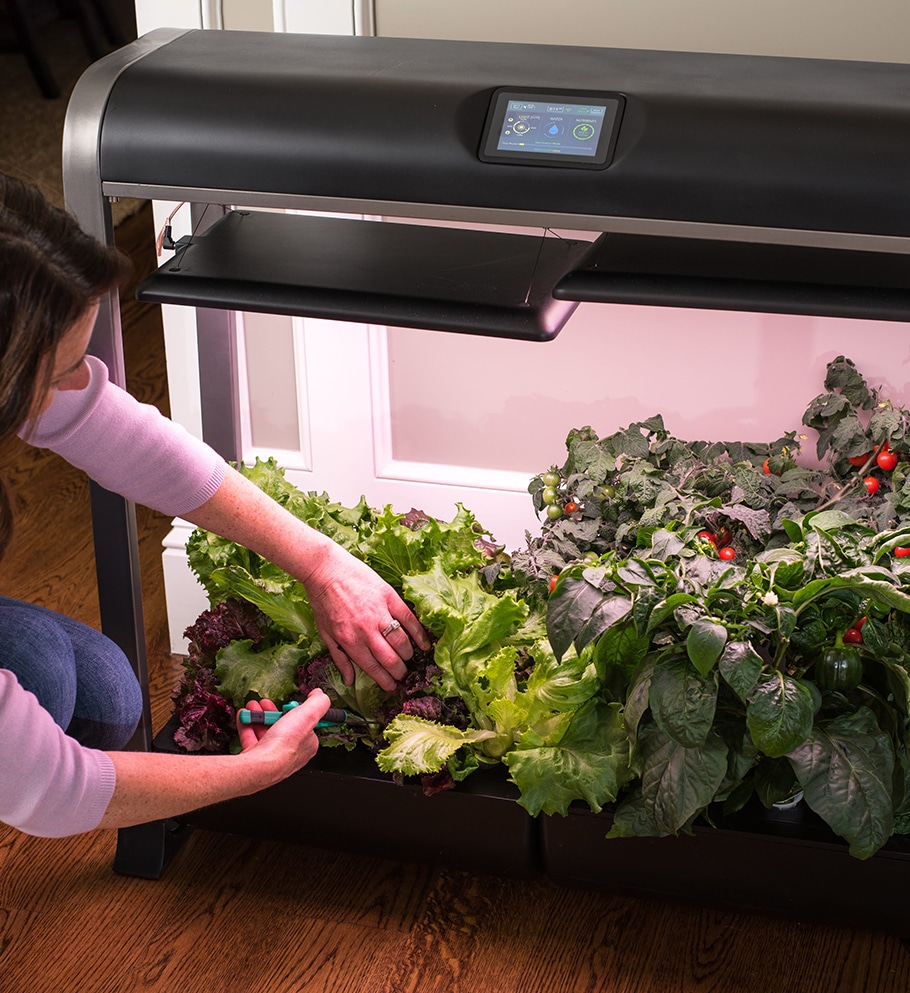
5X growth speed
Plants grow five times more quickly in the Aerogarden than they do in soil. As a result, we recommend you not pack your Aerogarden holes with seeds, alternating holes instead, due to the robust seed growth.
clean green machine
Keep your Aerogarden clean by giving it a weekly wipe down. When unboxing, fully wash the unit and ensure.
water, lights, action!
Ensure the growing lights above your Aerogarden are 4- to 6-inches above the plants. As your plants begin to grow to different heights, base this measurement on the tallest plant.
It is fine to use tap water for your plants. If the water is on the harder side, purified or distilled water is better.
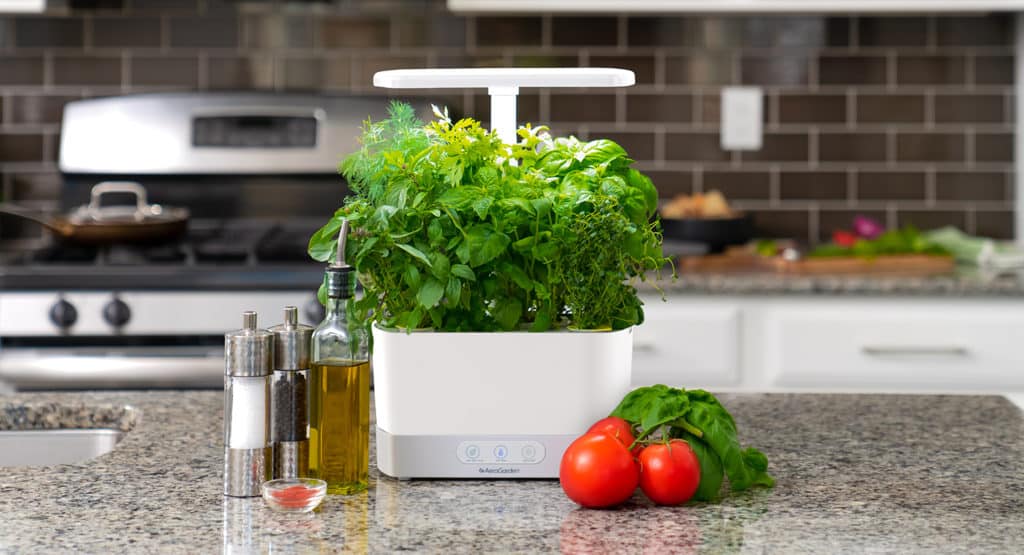
Don’t forget to prune them. This is especially important because Aerogardens grown and consume space quickly.
For more advice and ideas on Aerogardens, visit www.aerogarden.ca.
#easypeasy
Upcycle the ubiquitous terracotta plant pot. With these easy tips, you can bring those boring pots from drab to fab in a day

here’s what you need to get started:
- Terracotta pots
- Foam paint brushes
- Acrylic paint in your preferred colours
- Newspaper
- Matte or gloss sealing spray
- Pot cleaning brush (optional)
- Disposable plate (optional)
- Water (optional)
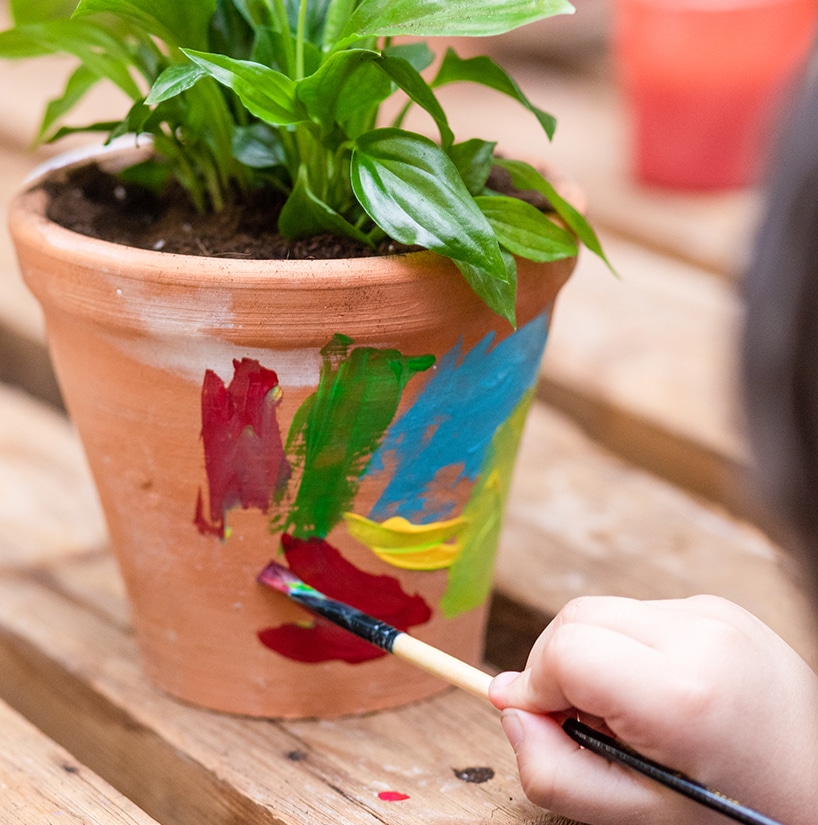
step one.
using pencil, sketch out the basic shapes of the type of plant you want to label: an elongated oval for peppers, rounded triangles for strawberries, circles for tomatoes, and so on. write out the name of the plant in pencil as well. use your best handwriting or get creative with fonts!
step two.
Clean your pot, whether it’s new or used. Your scrub brush can help you remove any dirt. Make sure that the pots are completely dry, which can take a couple hours or a couple days depending on their size.
step three.
If needed, thin the paint by squirting a good amount on the plate and adding a few drops of water and mix. Clay or terracotta pots are absorbent so thinned paint allows a more even coat of paint.
step four.
Get painting! Desired coverage might require two or three coats. You may wish to paint the top interior that is exposed above the soil.
step five.
Personalize your pots by adding designs, lettering or adhesive decals. Your plant babies deserve a pretty home all their own.
step six.
Allow paint and decorations to dry. Since these pot materials hold moisture, it may take longer than you expect to dry. Yes, we want our pots to be moist or our plants, but their painted surfaces!
step seven.
Seal the deal. Select a glossy or matte finish and spray the pot evenly in a well-ventilated area
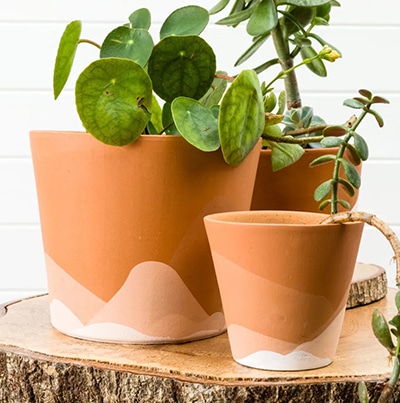
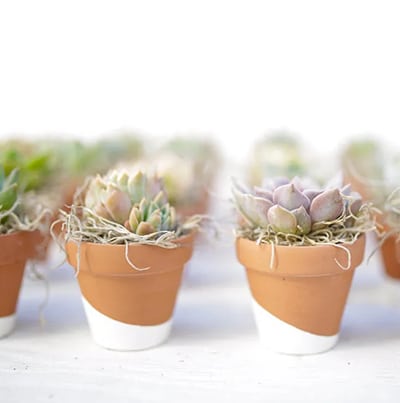
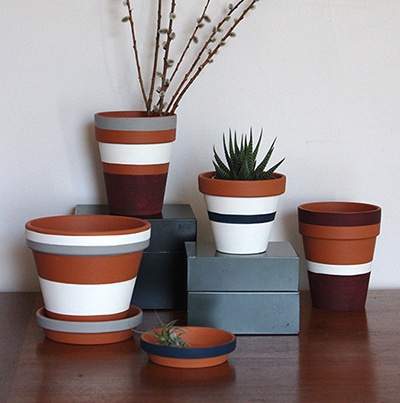
#easypeasy
Why are terrariums so popular? We don’t need to explain when you see the charming miniature, glass-enclosed world for yourself. Or, better yet, when you make your own. They are fun to create and so rewarding, especially when you compare your DIY terrarium to the cost of a store-bought version.
Here’s how to DIY your own plant terrarium, which is big on beauty and small on space. A bookshelf or hanging plant holder will do!
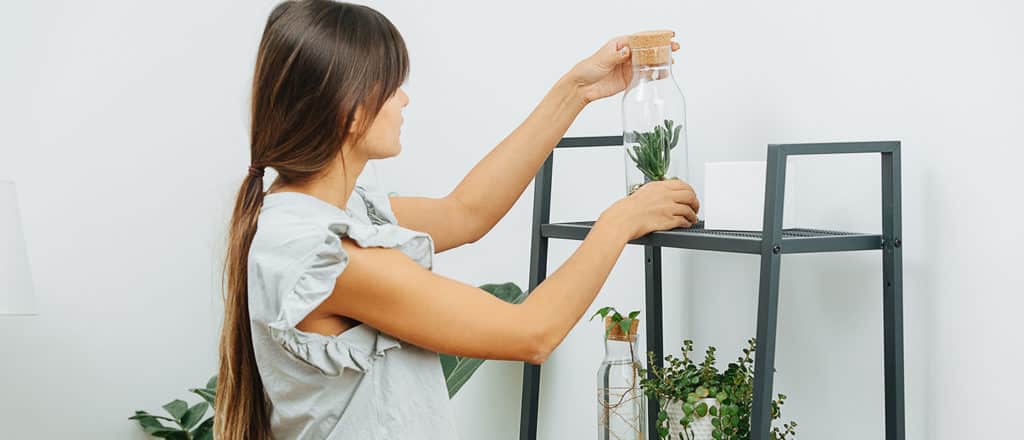
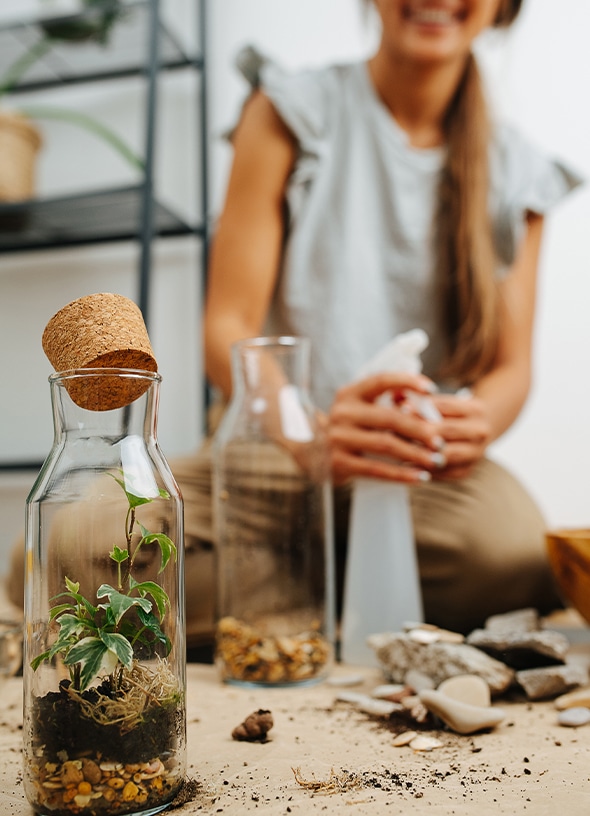
here’s what you need to get started:
- Polished or pretty stones
- Miracle-Gro® Potting Mix
- Pebbles for drainage
- Activated Charcoal
- Terrarium-friendly plants like succulents, air plants or miniature cacti
- Small gardening tools
- Small or medium sized glass vessel
- Miniature decorations or trinkets (optional)
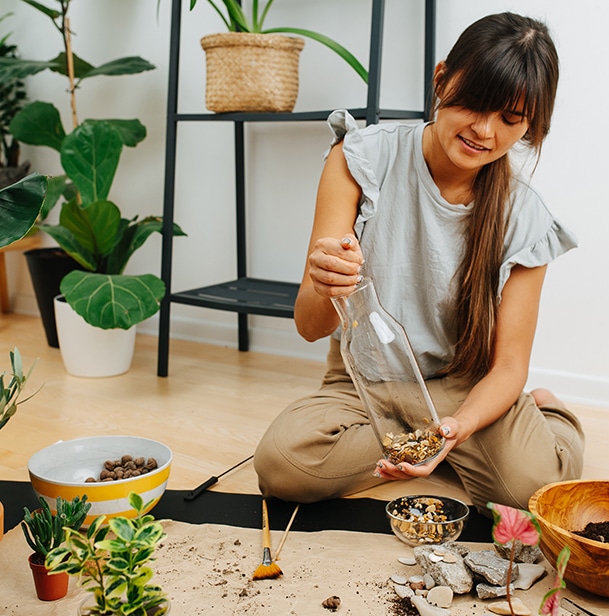
step one.
Spread a 1 ½“ layer of pebbles on the terrarium’s interior base.
step two.
Place the activated charcoal on top in a thin layer.
step three.
Add potting mix (or your mix of choice depending on plant type) ensuring adequate depth for plant roots, approximately 2.5”. Smaller glass containers may require slightly less.
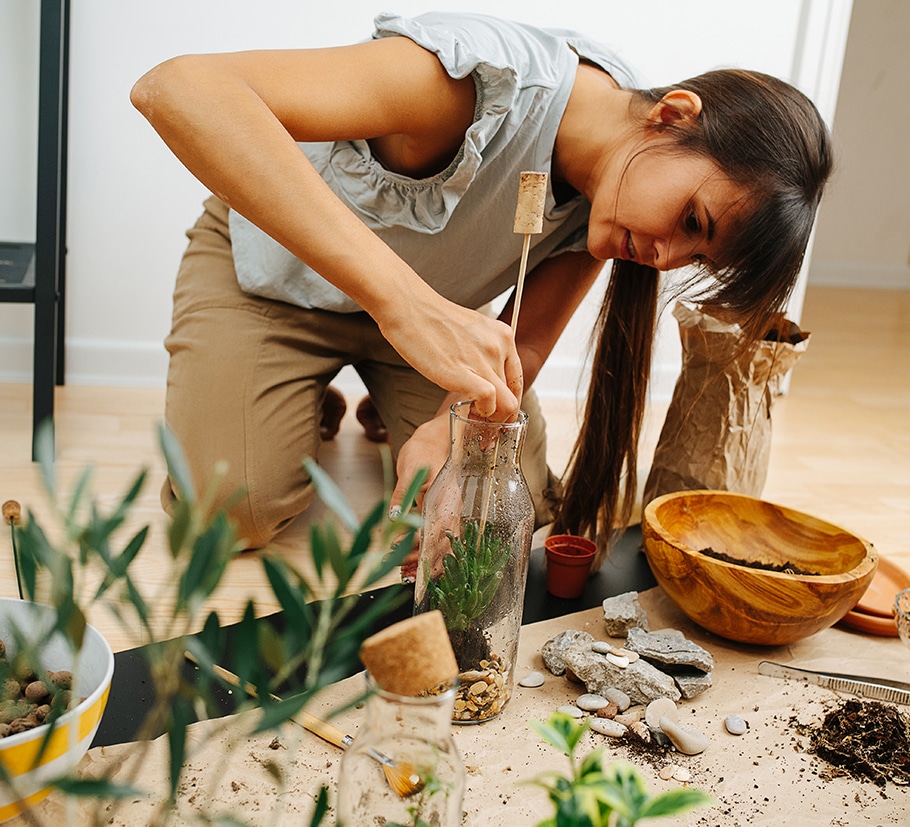
step four.
Add your plants, beginning with the largest one first. Add your plants, beginning with the largest one first. As a general rule of (green) thumb, prune the roots once you remove them from their container.
step five.
Using your fingertip, make a dent in the soil that is big enough to submerge the plant roots.
step six.
Gently nestle the small plant in the soil. We suggest starting from the back of the terrarium then making your way to the front. Feel free to experiment with spacing, as you are the one who decides what is most visually attractive.
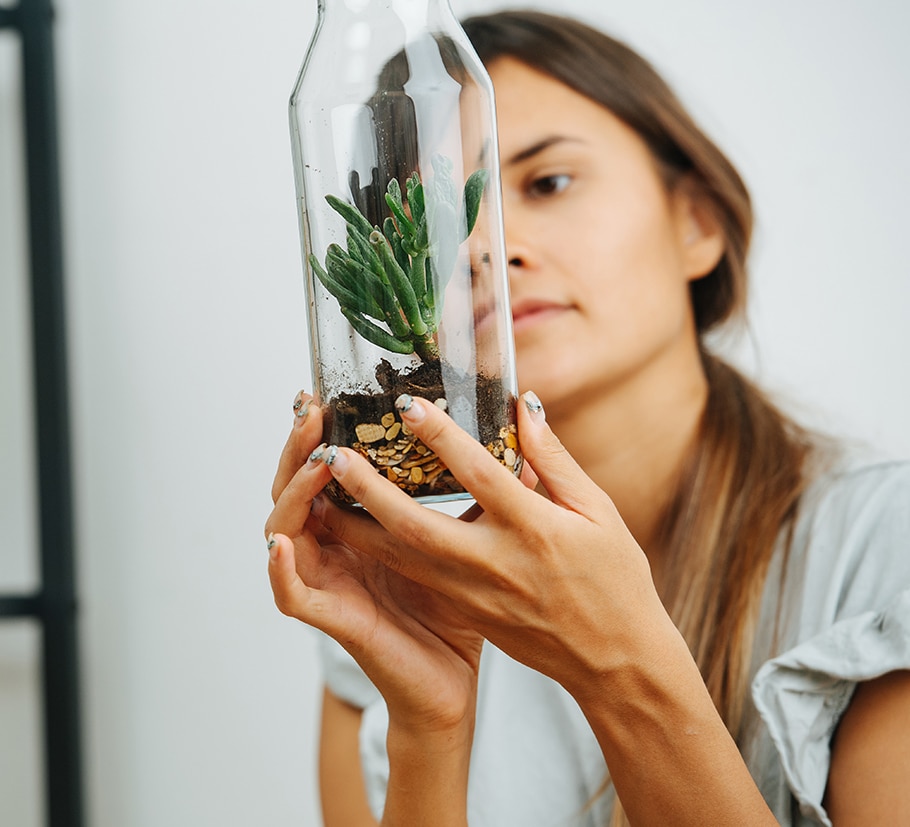
step seven.
If you’ve chosen to add some ‘pizzazz’ with additional miniature decorations, now you can (yes, you can even find tiny garden gnomes for your glass-enclosed garden).
taking care of your terrarium:
Now that it’s done, all that’s needed is simple upkeep. Find a place to show it off, a spot that has ample indirect sunlight and make sure to dampen the soil every two weeks or when it appears to need moistened.
#easypeasy
Why wait for tomato plants at the garden centre? Take your tomato game to the next level and sprout your own seeds indoors.
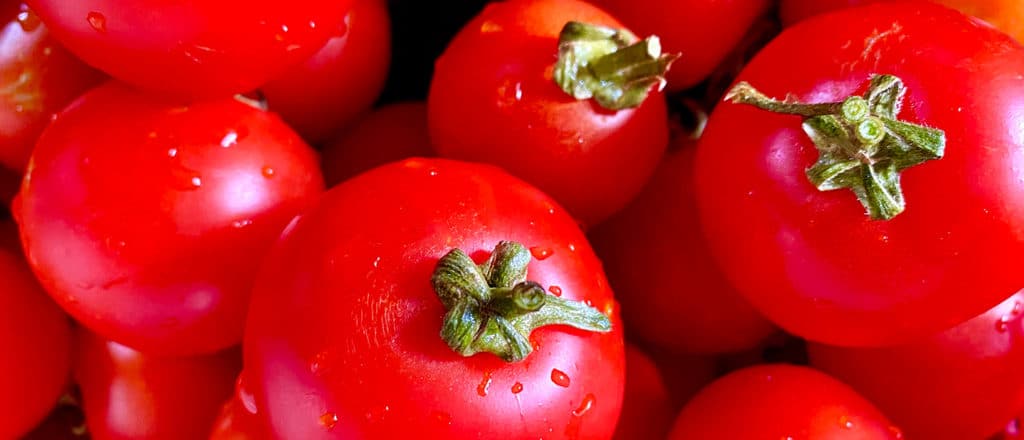
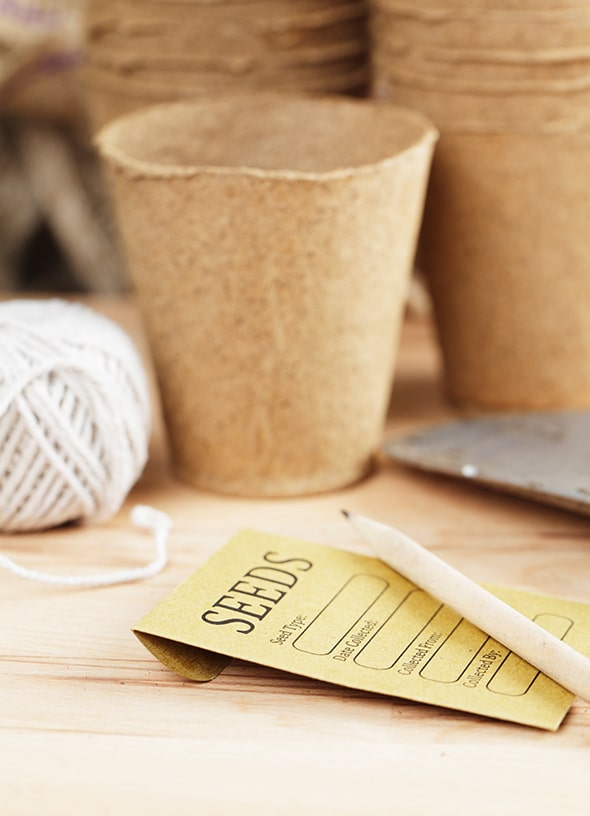
here’s what you need to get started:
- Tomato seeds (opt for ones that are less than one year old)
- Miracle–Gro® Seed Starting Potting Mix
- Seed-starting pots (we recommend recycling egg cartons as an eco-friendly option, but you can also purchase pots.)
- Water bottle for misting
- Plastic wrap
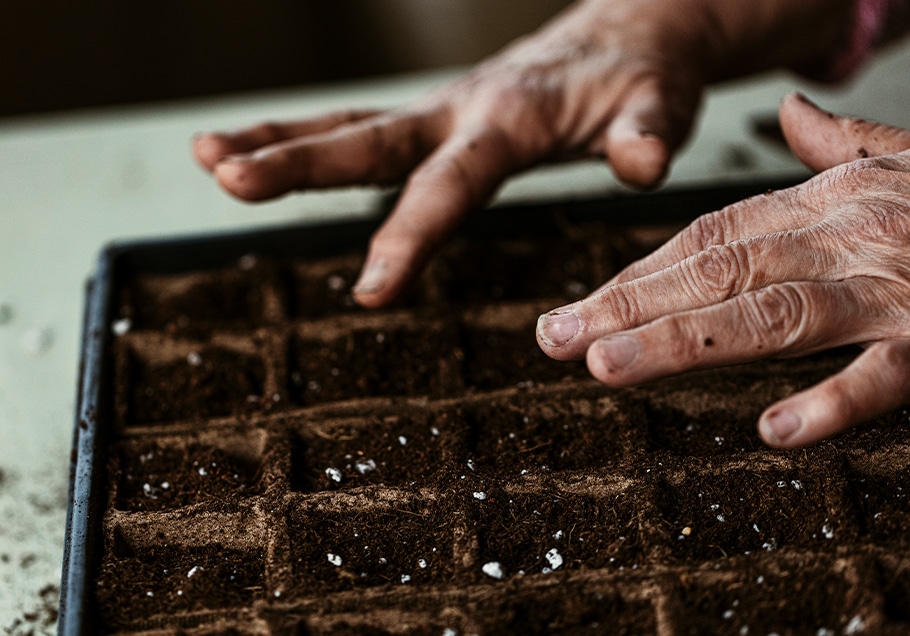
step one.
Add Miracle-Gro® Seed Starting Potting Mix to the seed pot, about a quarter of the way filled. Gently pat it down but do not make it too compact.
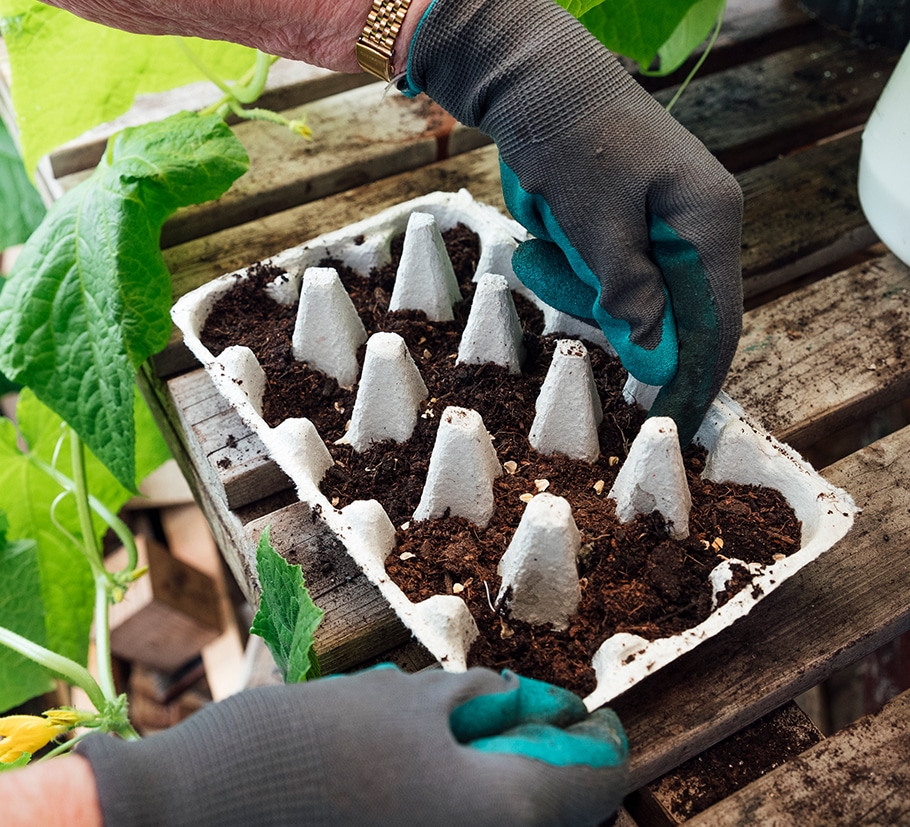
step two.
Place 2 to 3 seeds in each pot, covering with a small amount of additional mix.
step three.
Moisten the top layer (enough to cover the seeds) with your spray bottle.
step four.
Find a warm, dark place to keep your seed babies. Don’t forget to cover them in plastic wrap.
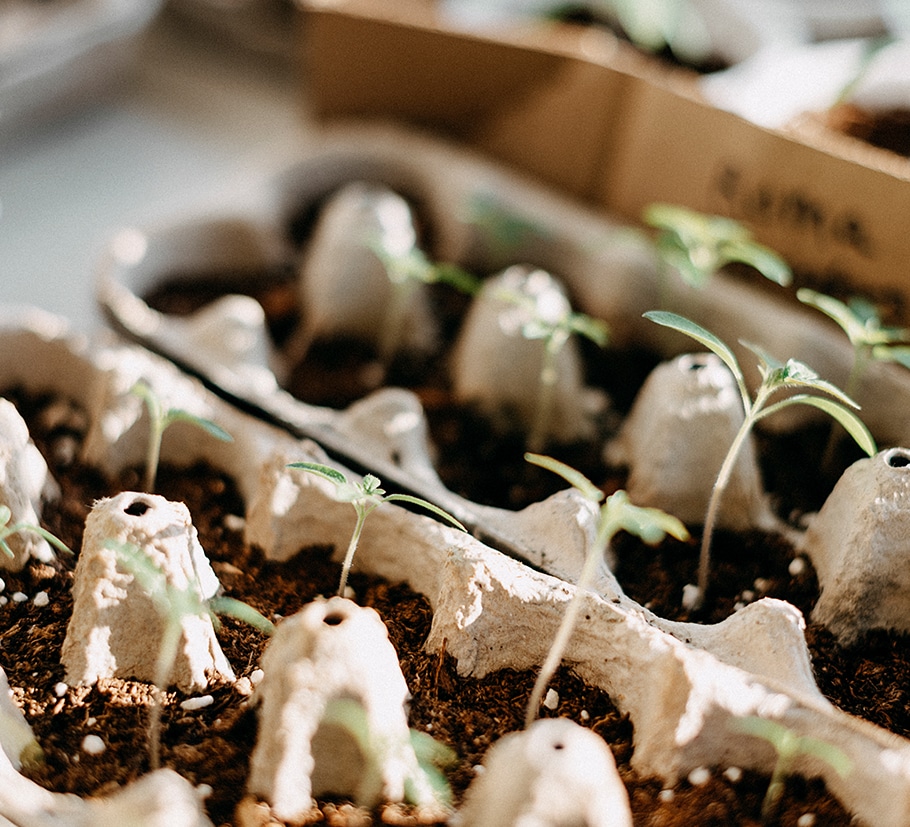
step five.
Checking in on your seed babies daily, ensure the soil is always wet but not soaked.
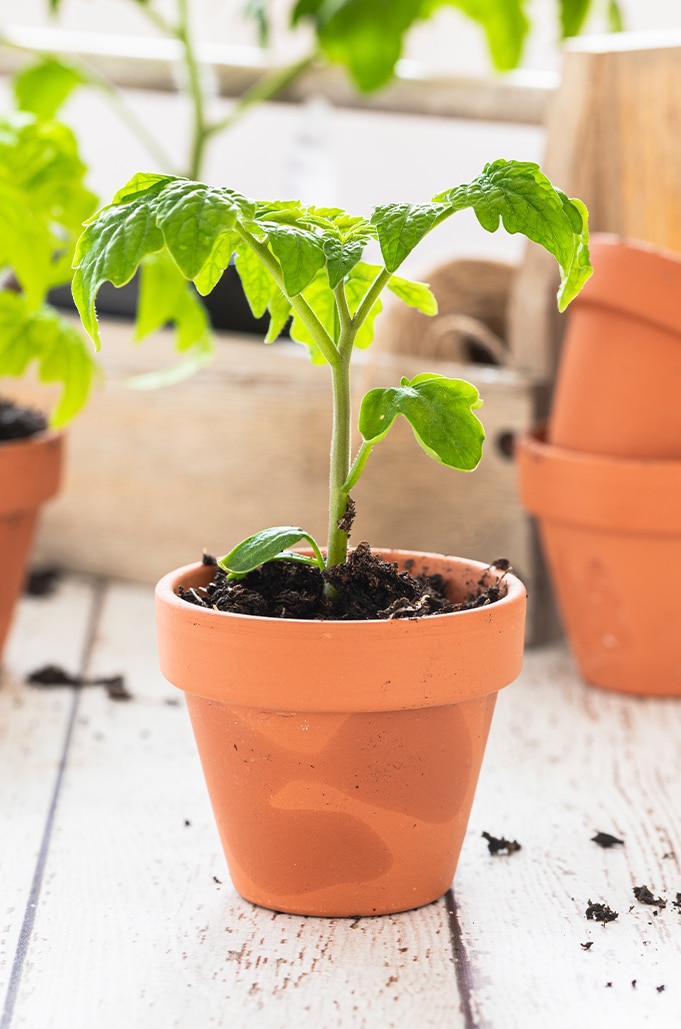
step six.
When you see sprouts emerge, move them to a sunlit window or use an indoor growing light.

#easypeasy
The beauty and practicality of greenhouses don’t have to be relegated to the great outdoors. This a rewarding plant project that keeps on giving.
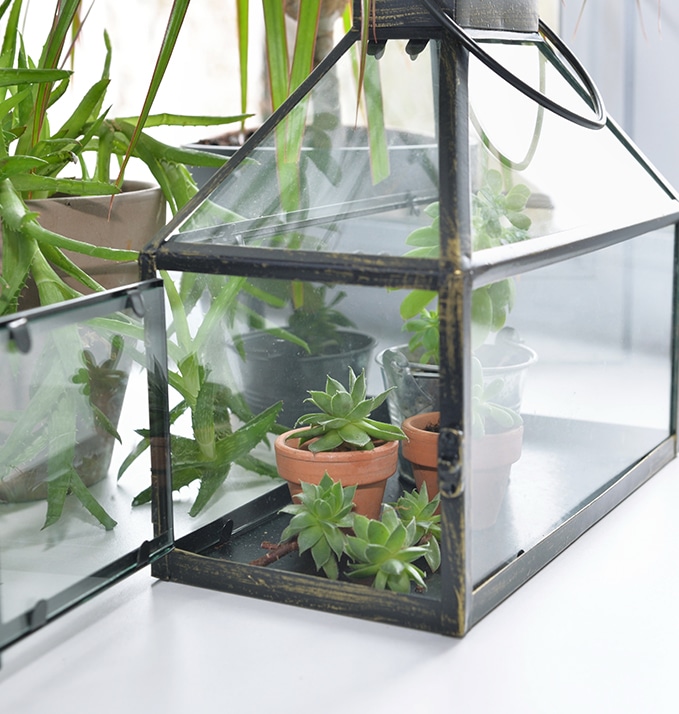
here’s what you need to get started:
- a glass cabinet
- a grow light
- portable humidifier
- small fan
- heating mats (optional)
- pegboard (optional)
- decorations
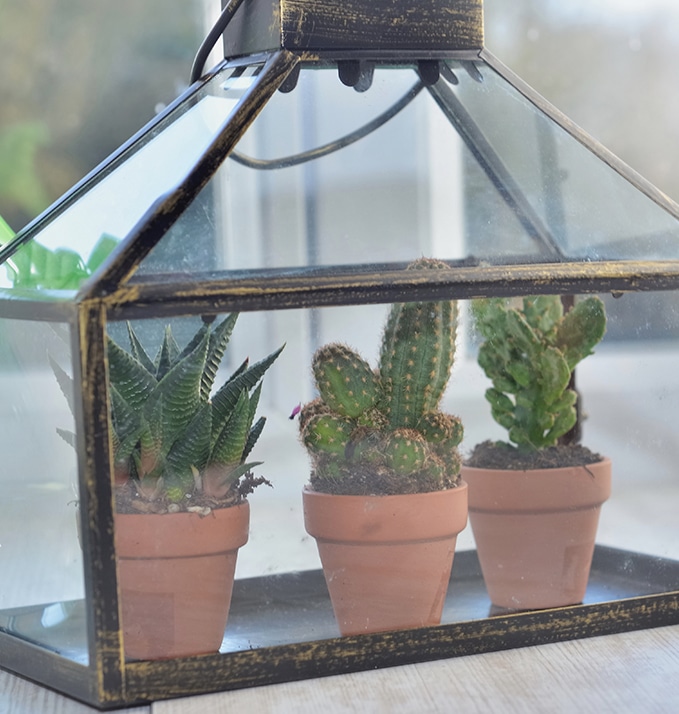
get a glass cabinet
Search your local antiques shop or home décor or furniture store for a glass cabinet that speaks to you.
install a grow light
After assembling (if required) your glass cabinet that will soon become a greenhouse, it’s time to add grow lights. If you plan to put your greenhouse in a darker or shaded area of your home, grow lighting is especially important. A home improvement store will have varying styles, we recommend those with adhesive strips for ease of installation.
control air quality
Greenhouses are excellent for tropical plants that need humid conditions. Add a portable humidifier or water tray inside your greenhouse. To circulate the air, you may wish to include a small fan. Greenhouses are also useful for plants that do not require humidity.
get creative
The last step of building your own indoor greenhouse is up to you, as it is customizing it to make it your own. Shelving, rugs or heating mats, pegboard or particle boards, small garden gnomes – whatever useful or aesthetic ideas you have, now you can add them to your indoor greenhouse and enjoy the fruits (and flowers) of your labour!
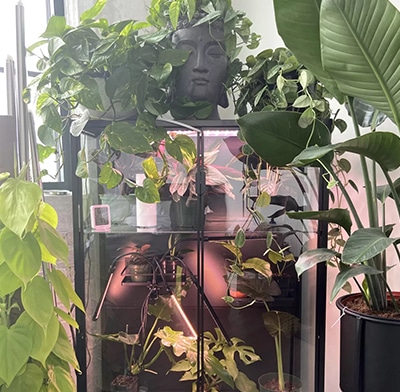
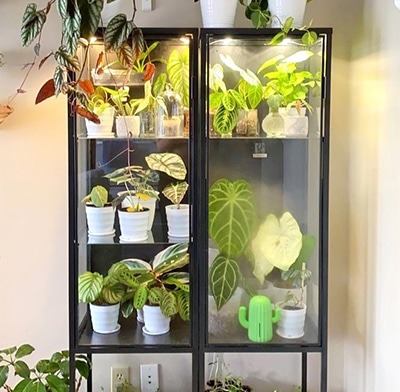
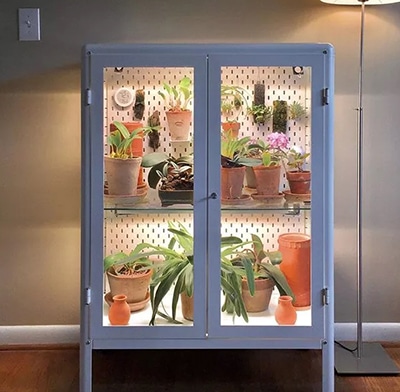
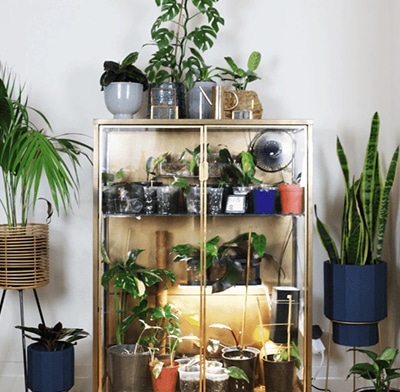
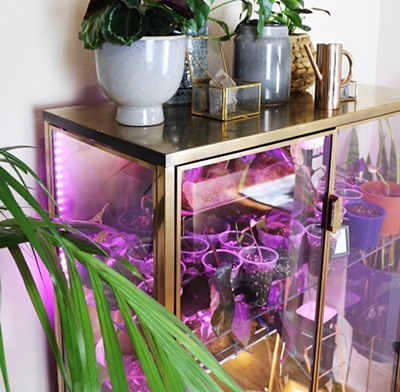
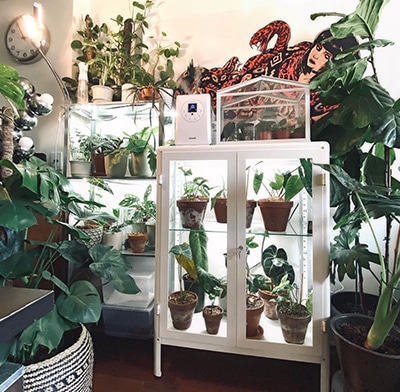
#easypeasy
Babies don’t come with instructions but plant babies do. Even with instructions, you may still have some questions on doing right by your plant. We’ve got you covered with some basic houseplant do’s and don’ts.
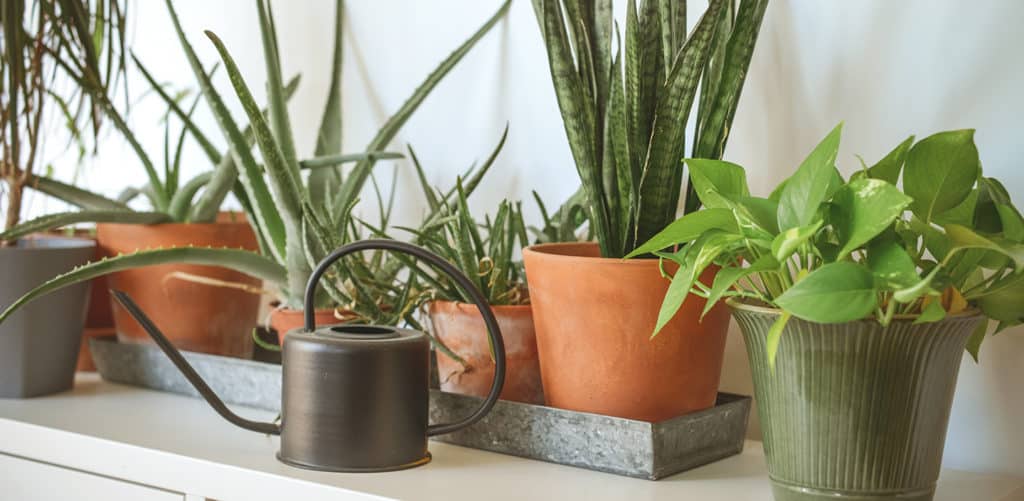
let your plant get used to its space and quarantine. When you introduce your new plant to its new home, it will need time to get acclimated. Another good rule of thumb is to keep your new plant well away from other houseplants for at least 2 weeks. This gives you time to inspect your new baby for bugs or diseases.
keep it on a schedule. Plants love structure. Watering and feeding your plant on a schedule helps to keep it happy and healthy. Most plants like to stay moderately hydrated and well fed. Take a look at our plant tags to find more information about your plant and its needs.
repot when the time is right! A good rule of thumb is to repot once the plant has reached 2-3 times the size of their pot. Another good indicator is if it appears to be growing slower than it should. A new size pot let’s your plant spread it’s wings (if it’s a Caladium it really does have wings)
repot too soon. Slow your roll! Repotting a plant suddenly can cause browning leaves or wilting. Give your new buddy time to get used to its new home before repotting. You may not need to for quite some time!
let it get root bound. Roots that push through drainage holes can push the plant out of its pot. This is a pretty big hint that your plant needs more room. It’s time to let it stretch its legs.
let it dry out too much. Your little plant baby will thrive in high quality potting mix, Miracle-Gro® Indoor Potting Mix but potting mix dries out faster than normal soil. So check for dryness with a quick finger dip to test the mix. If it’s dry, you know what to do.
QUICK TIP
Plants love a fresh dose of potting mix, so re-pot every year right before the warm-weather growing season.
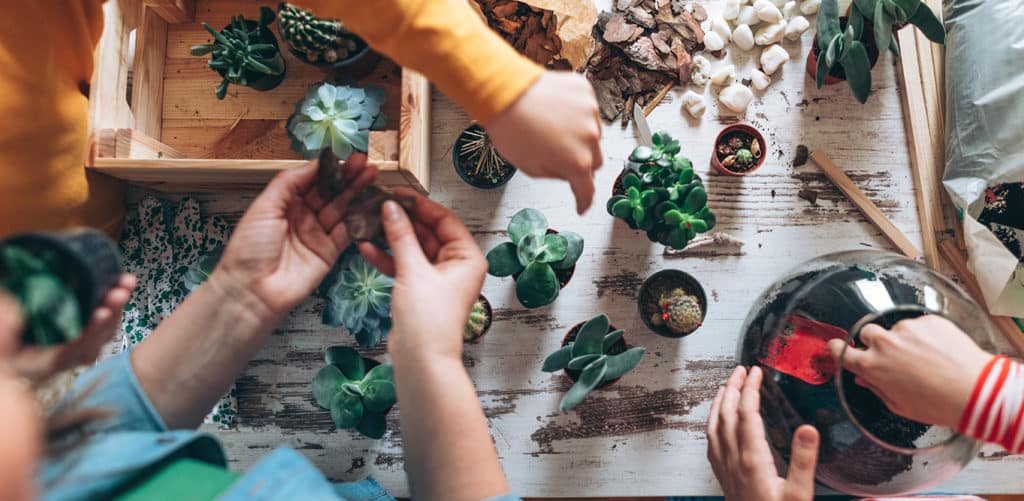
Whether it’s a new botanical you’ve brought home or an old friend, your house plant might be home to unwanted guests. Factors like too much or too little water, light, heat, or fertilizer can cause many plant problems, including pest infestations. There is generally two ways to help your plants when you spot pests.
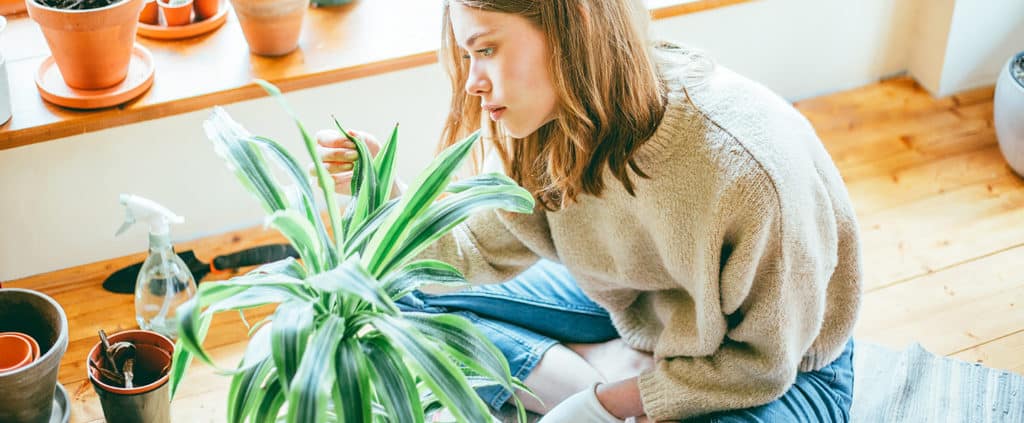
non-chemical treatments
Early infestations can be caught and little bugs can be removed by hand, or with a cotton swab dipped in rubbing alcohol. This works well for aphids and mealybugs. Scaley insects may need to be scraped off with your nail. Simply spraying a sturdy plant with water can remove many pests. Be sure to spray all plant surfaces. Spraying water repeatedly helps control spider mites. Spraying the plant with insecticidal soap can often eliminate an infestation in its earliest stage. You may not be aware of an infestation at first. Pests may be hidden or in the egg stage, getting rid of them often takes more than one treatment. If the plant is severely damaged and not valuable, often the best and simplest solution may be to discard the plant as well as its soil and start with a new plant.
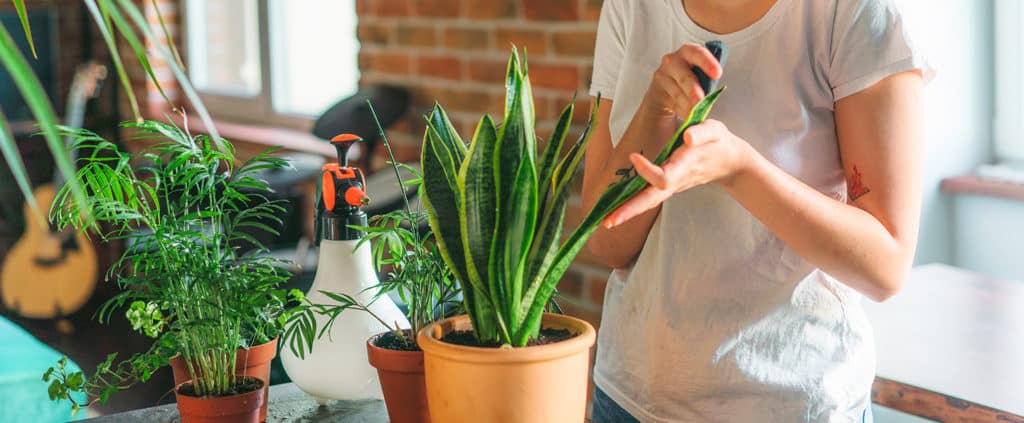
chemical treatments
Before choosing a pesticide, it is important to know exactly what pest you’re trying to get rid of. A single pesticide will not kill all kinds of pests. Some pesticides are only effective against certain kinds of pests or even certain life stages. It’s important to understand that you may need more than one application of a pesticide to get control of the situation. A good idea is to alternate the pesticide used from one application to the next as some pests develop resistance quickly. Usually a pesticide label will include a list of plants for which the pesticide is recommended, as well as a list of plants that are known to be sensitive to the pesticide. As always, before purchasing and using any pesticide, be sure to read all label directions and precautions and then follow them carefully. Using a gentle insecticidal solution like Ortho® Bug B Gon® ECO Insecticide Ready-to-Use, is an easy way to help prevent recurring infestations.
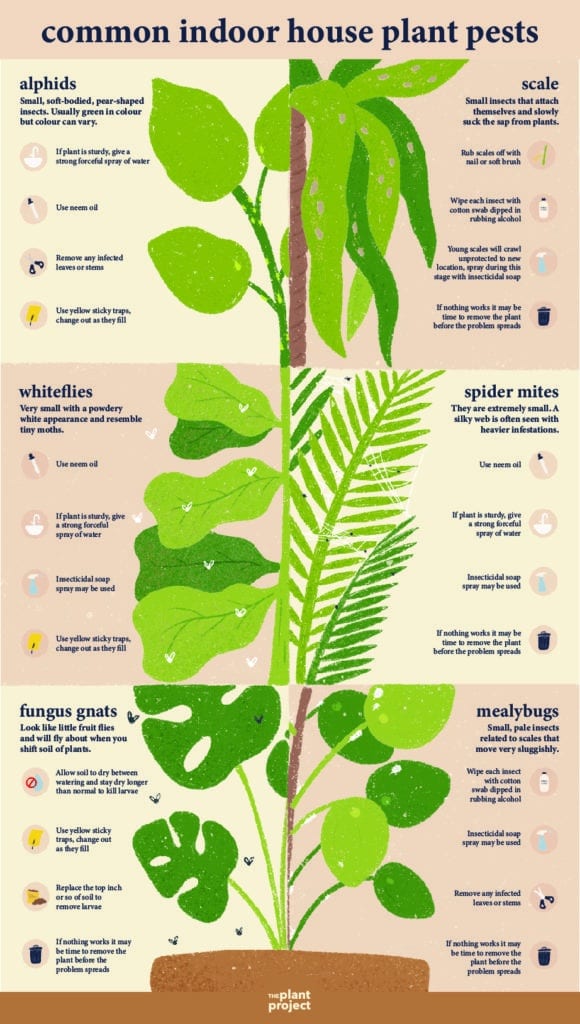
Looking to turn your home into relaxing green space, well let’s set you in the right direction. We have the easy to grow stars of the plant world here. These plants can generally withstand erratic watering, uneven or bad light, and fluctuating temperatures. How’s that for easy going. Here’s our comprehensive list of the best starter house plants.
